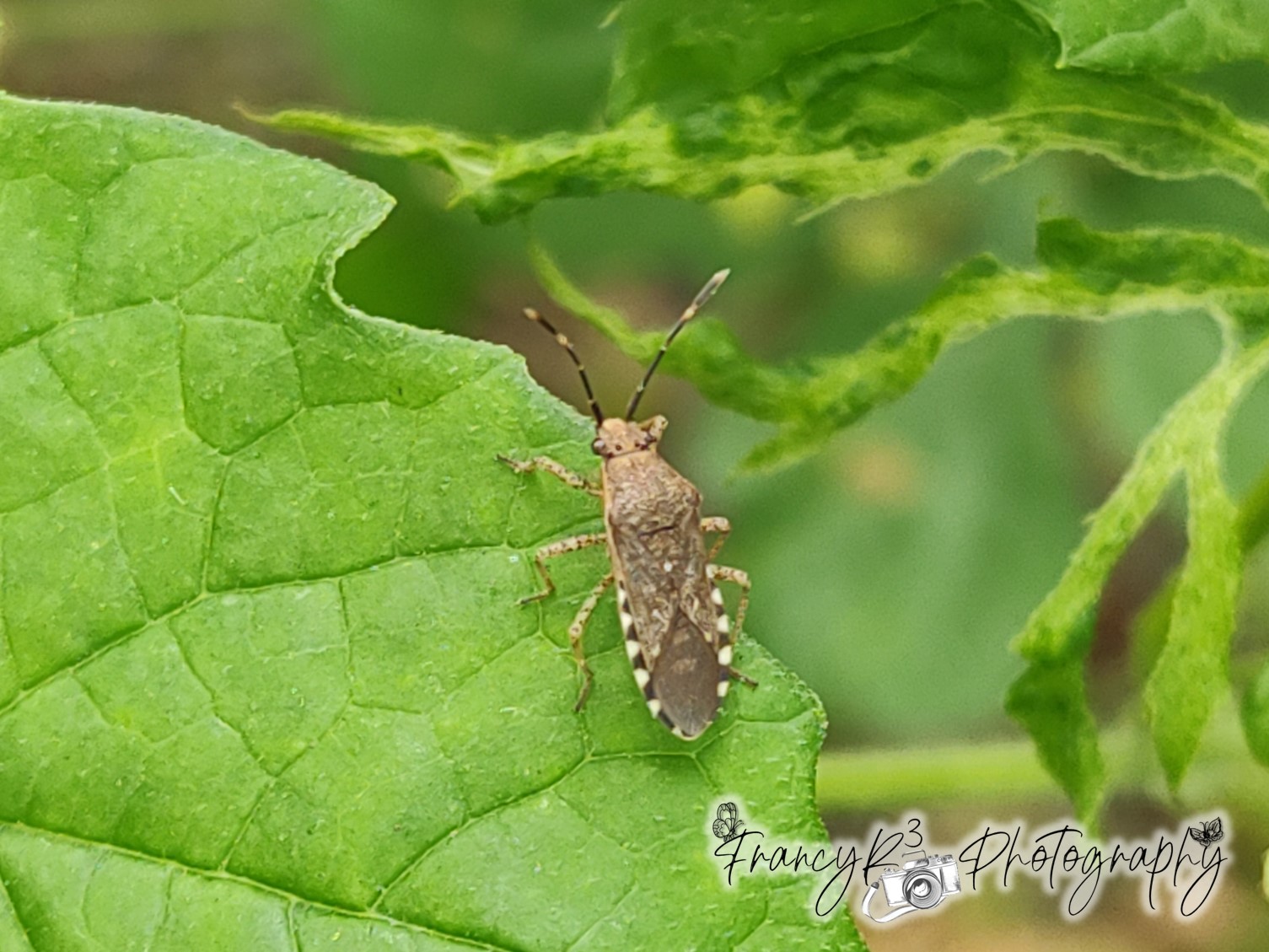Welcome Dear Photography Lovers
Bienvenidos Queridos Amantes de la Fotografía
As you have noticed in most of my publications, I have become a fan of the wonders that nature gives us. Wherever I go, I am always looking around to see if I find any surprises, and most of the time I am rewarded by finding a plant that is there for all to see, giving us all its beauty and splendor. This time was no exception, and the images I share with you, I was able to capture them when I observed very closely a group of plants that are in a building that belongs to the University where I work. It was a group of small insects, which were among the leaves and flowers of the curious wild plants, and from what I could find out on the web, they are a type of bedbugs, as we commonly call them.


Siendo más específica, al parecer a este curioso insecto se le conoce popularmente como Chinche de la Calabaza o Chinche Escudo. Sin embargo, debo resaltar, que este último nombre se le atribuye no solo a esta especie en particular, sino a todas aquellas que, igualmente pertenecen a la familia Coreidae. Y esto se debe a que el cuerpo de todos los insectos que pertenecen a esta gran familia se asemeja a un escudo. Ahora, si hablamos específica mente de la especie y en términos científicos, la forma correcta de cómo lo debemos llamar a estos insectos perteneciente al orden de los Hemiptera y al género Anasa es, Anasa andresii.
More specifically, it seems that this curious insect is popularly known as the pumpkin bug or shield bug. However, I must emphasize that this last name is attributed not only to this particular species, but to all those that also belong to the family Coreidae. And this is because the body of all insects belonging to this great family resembles a shield. Now, if we talk specifically about the species and in scientific terms, the correct way to call these insects belonging to the order of Hemiptera and the genus Anasa is Anasa andresii.



This species, native to North America, was first described in 1798 by the German entomologist Johann Christan Fabricius. As for its appearance, this insect is characterized by a dark brown body, flattened and oval in shape, measuring approximately 17 mm long and 10 mm wide. Its head is small and from it emerge two long and thin antennae, and its legs are also long and thin. As I already mentioned, the upper part is covered by a kind of shield.



In another order of ideas, although it must be emphasized that its origin and greater presence is located in the United States and Canada, at the present time we can find it in diverse places of the planet. The commercial exchange between countries has allowed this small insect not only to migrate to the southern part of the American continent, but also to reach the European, Asian and African continents. It is necessary to emphasize that the arrival of this species in habitats other than its original one has not necessarily been beneficial for the receiving ecosystems. In some cases, due to the lack of predators, they have become pests that reduce the yield and quality of crop products, such as pumpkin, melon and cucumber. This is due to the fact that when they feed, they weaken the plants by extracting the sap, which usually results in deformation of the leaves and fruits.



Well, I just have to say goodbye, hoping that the information and images that I share with you on this occasion have been to your liking. I hope you enjoy an excellent week full of blessings and do not forget to always take a moment to be aware of the wonders that nature gives us every day. Health and Blessings to all.

Bibliographic References || Referencias bibliográficas:
https://www.naturalista.mx/taxa/482534-Anasa-andresii
https://en.wikipedia.org/wiki/Anasa_andresii
https://entnemdept.ufl.edu/creatures/veg/leaf/squash_bug.htm

Contenido y fotografías de mi propiedad intelectual
Información Técnica
| Cámara | Pentax * istDL |
|---|---|
| Lente | * Pentax 18-55 |
| Iluminación | Luz Natural |
| Locación | Barcelona, Estado Anzoátegui, Venezuela |
Content and photographs of my intellectual property
Technical information
| Camera | Pentax * istDL |
|---|---|
| Lens | * Pentax 18-55 |
| Lighting | Natural Light |
| Location | Barcelona, Anzoátegui State, Venezuela |


